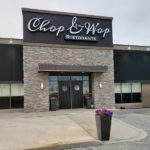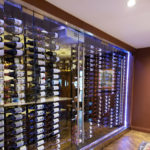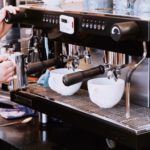Written by: Ariel Landa: Global Hospitality Leadership (MPS)
Five techniques used by restaurant establishments in order to increase revenue:
- Specials and/or Discounts
- Growth in revenue can be achieved due to the principle of demand pricing. By offering specials and/or discounts during peak times such as valentine’s day, a restaurant can increase the attendance number, as lower prices result in higher demand. Ultimately, cost must be taken into account, however if done properly, the increase in revenue due to an increase in volume could outweigh the loss in revenue due to the price discount.
- By offering discounts, a restaurant can potentially attract a customer that otherwise wouldn’t have visited the establishment. Consequently, by getting a customer to pay their best price, instead of having a constant and/or static price, a restaurant increases revenue by making that sale. As, it is better to sell an item at a 10% discount to certain individuals than not sell the item at all in some cases.
- Gift cards and/or limited time offers
- Secure sales and puts money on the books sooner
- The principle of breakage: some to all of the amount of the gift card may remain unredeemed due to a variety of reasons, i.e. the patron forgot about having it
- Packages
- The value proposition presented to the customer concerning packages is that his/her package costs less than the summed price of the individual items if ordered separately (ex. McDonald’s McPick Two promotion).
- Restaurants are able to increase an individual’s revenue contribution by increasing his/her spending.
- Third party apps
- Leloca: an app that is advertised as a tool that makes the most of unused capacity. By using geo-targeting capabilities, the app offers a way for restaurants to fill empty tables during off-peak hours. Restauranteurs can create discounts and consumers are notified by geo-targeting methods so that restauranteurs can decide which customer segment they want to attract
- Savored: an app designed to attract profitable diners during high-peak and off-peak times by offering discounts to guests who make reservations during low-demand times and deals for seats that have been cancelled last-minute
- Table8: used by restaurants, facilitating a way for them to generate more revenue in peak periods without raising prices by charging a reservation fee
- Froogle: helps fill empty seats on demand by creating a promotion that can be limited to a number of specific seats
- Implementation of The Five P’s of Marketing in Relation to Revenue Management
- Product considerations are made as they relate to revenue management, as items for the menu need the capability of being analyzed so that menu engineering can occur
- Menu and table placement needs to be taken into consideration in order to maximize revenue
- Price elasticity and psychological pricing principles should be applied
- The operation should be promoted to the right audience and the right items should be promoted to the right segment with revenue increases in mind
- People within the operation should adopt a culture of revenue management, especially management (i.e. chefs should think about confidence margins and volumes of items being sold vs. the creativity of the dish)
Three Issues that have stopped efforts in restaurant revenue management:
- Change management
Restauranteurs have only recently started to embrace new revenue management techniques across different segments of the restaurant industry (i.e. fine dining, quick service, fast food etc.). One example of a new revenue management technique is currently being practised at a high-end London restaurant. The high-end restaurant charges 25% less for it’s a la carte menu during off peak times and 15% less during mid peak times because the restaurant found that during lunch and dinner they were operating at over-capacity, however, more often than not they were operating below capacity. This is rarely done outside of the standard happy hour times.
- System integration with systems listed below to provide data in order to implement techniques mentioned above
- POS
- Loyalty program
- Third Party App
- Collection of data:
- Accurate party size information, Accurate check opening and closing times, Accurate check amounts, Accurate information on the menu items ordered and information on the method of payment.







